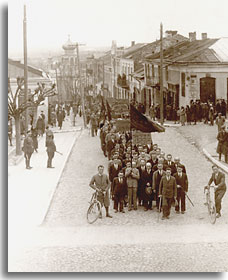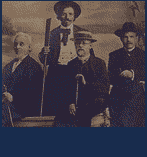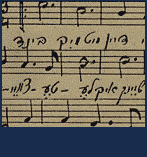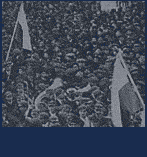

Khelem (Chelm)
Shtetl of Fools?
Perhaps the most famous of all shtetlekh, Khelem was a large community near Lublin, Poland that boasted one of the most important centers of Jewish learning during the pre-modern era. However, its notoriety comes much less from its once-distinctive schools and scholars, but from its reputation as the "Town of Fools." For reasons unknown to historians and likely based on no historical fact, Khelem has served as the butt of Jewish jokes and folktales for centuries, portrayed as a bastion of ignorant simpletons, good hearted fools, and plain people with naive unsophisticated logic.
There are countless tales, long and short, of the gracious foolishness of the Khelemer. Here are just a few examples:
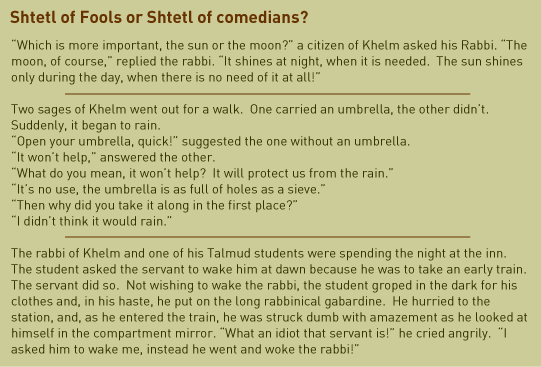
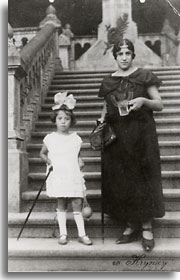

Shtetl of Sages
Though Khelem was such a universal symbol of foolishness within Ashkenazi humor and folklore, the actual shtetl bore little resemblance to the wild caricatures passed on through the centuries. In fact, it was a fairly traditional shtetl with a Jewish culture similar to that of other communities.
Trickling into town as early as the 12th or 13th centuries, the Jews of Khelem formed a significant community by the 16th century and they supplied the usual services as traders and craftsmen, particularly in the leather industry. In 1897, Jews numbered over 7,000 (more than 50 percent of the total population) and, in 1921, about 12,000 out of 23,000. Almost a city in its own right, a look at Khelem's Jewish community in the days before World War II would reveal a complex spectrum of Jewish institutions: synagogues, cemeteries, bote-midroshim  (prayer and study halls), Hasidic shtiblekh
(prayer and study halls), Hasidic shtiblekh  , yeshives
, yeshives  , khadorim
, khadorim  , a Hebrew Gymnasium, a Tarbut
, a Hebrew Gymnasium, a Tarbut  school, three Yiddish newspapers, three Jewish banks set up to rebuild the community after World War I, welfare organizations, orphanages, a chess club, a drama club, a theater, and other community organizations.
school, three Yiddish newspapers, three Jewish banks set up to rebuild the community after World War I, welfare organizations, orphanages, a chess club, a drama club, a theater, and other community organizations.
From as early as the 16th century, Khelem had emerged as a center of religious study in the Ashkenazi world, and its yeshives attracted prominent rabbis and students who made it a dynamic and fertile center for Judaism until the 19th century.
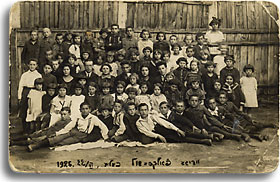

Among the great scholars who lived in Khelem in the late 18th century was Shloyme ben Moyshe, the rabbi of Khelm, who was called Rabbi Shloyme Khelma by his followers. A versatile scholar and thinker who was ahead of his time, he studied the texts of Rambam and traditional Jewish scholars, but was also passionate about logic, mathematics, and science and he insisted that Khelem's Jewish scholars study both traditional Judaism and also secular subjects.
The strong presence of both enlightened and Hasidic Jews during the 19th century was testimony to the diversity within the shtetl. While many within the shtetl were deeply attracted to modern ways of viewing Jewish identity - accepting of secular education, favoring Polish, German, or Russian as the linguistic vernacular, supporting less traditional liturgy - many others were among the first to embrace Hasidism. These Jews founded a dynasty of their own circa 1800, which lasted until the Holocaust. The Khelem dynasty was established by Rabbi Yosef Kazis, a student of the Seer of Lublin, and, as a group, they secured control of the kehile for many years.
In the days leading up to World War II, many Hasidic shtiblekh existed, hosting a variety of branches - Kuzmir, Trisk, Radzin, Belz - which have since regrouped in other countries, including the United States. In Khelm, the Belzer Hasidim were particularly influential and renowned for their strictness. They refused to support even the most religious of Jewish political parties - Agudat Israel - adhering to the Belzer Rebbe's demand that they not become involved in Jewish politics, as politics were seen as treyf  (unacceptable) for Jews
(unacceptable) for Jews









